Harmanpreet Kaur Reveals Why She Gave Trophy to Legends
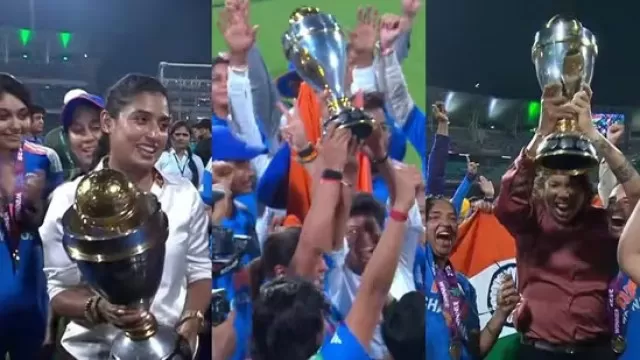
When Harmanpreet Kaur lifted the ICC Women's World Cup trophy on November 2, it was not just the culmination of a dream but the fulfillment of a promise made years ago. India’s victory over South Africa by 52 runs at the Dr DY Patil Stadium in Navi Mumbai marked the nation’s first-ever Women’s World Cup title. Yet, what followed after the final whistle captured millions of hearts — the moment when Harmanpreet handed the trophy to legends Mithali Raj, Jhulan Goswami, and Anjum Chopra. The gesture wasn’t just symbolic; it was a tribute to the pioneers who built the foundation of women’s cricket in India.
As the crowd roared and the team embarked on their victory lap, the sight of Mithali, Jhulan, and Anjum holding the trophy alongside the champions brought tears of pride to fans across the country. For many, it felt like the circle was complete — the torchbearers of the past had finally seen their dream realized through the next generation. Harmanpreet Kaur, in her post-match reflection, revealed that this gesture was pre-planned and deeply emotional for the team, representing gratitude and acknowledgment for those who carried Indian women’s cricket through its toughest years.
The atmosphere at DY Patil Stadium was electric, yet grounded in emotion. For a generation of players who had grown up idolizing Mithali Raj and Jhulan Goswami, it was more than just a win — it was redemption, recognition, and remembrance. As Harmanpreet later admitted, the team had long decided that when they eventually won the World Cup, the moment would be shared with the legends who paved the way for them. It was a story of unity, respect, and legacy — values that define Indian cricket at its best.
The Historic Win and Its Emotional Aftermath
India’s triumph in the Women’s World Cup final was the result of relentless determination and years of rebuilding. Under Harmanpreet Kaur’s leadership, the team showcased a level of composure and strategy that reflected their maturity as world champions. The final against South Africa was intense, but India’s dominance was clear — a 52-run victory built on an all-round performance by Shafali Verma and Deepti Sharma.
Shafali’s explosive 87-run knock provided the platform, while Deepti Sharma’s five-wicket haul ensured South Africa’s chase was cut short. Every player contributed in some way, from fielding brilliance to calm captaincy. Yet, amid all the celebration, the defining image of the evening wasn’t just the trophy lift — it was the passing of it to the veterans. It was as if history, present, and future stood together on that podium.
A Promise Fulfilled: The Decision Behind the Gesture
Harmanpreet Kaur later shared that the decision to involve Mithali Raj and Jhulan Goswami was not made spontaneously. It was a deeply emotional pact within the team — one that dated back to 2022 when India fell short in a previous World Cup campaign. The memory of that loss, especially knowing it was the final tournament for Mithali and Jhulan, left the team heartbroken. Harmanpreet recalled sitting with Smriti Mandhana and reflecting on their inability to deliver a trophy for their seniors.
“We had decided back then,” said Harmanpreet, “that the day we win, they will be there. We wanted to see them lift it with us.” It was a simple but powerful wish, and fate had conspired to make it possible. When Mithali, Jhulan, and Anjum were present in the commentary box that night, it became the perfect opportunity to turn that dream into reality. Their presence transformed a celebration into a moment of legacy, a moment where generations intertwined under one banner of victory.
Legends of the Game: A Tribute to Mithali, Jhulan, and Anjum
For Mithali Raj, Jhulan Goswami, and Anjum Chopra, the moment of holding the World Cup was a long time coming. Each had dedicated decades to the sport, often under the shadows of limited recognition and inadequate support. Mithali’s calm leadership, Jhulan’s fiery pace, and Anjum’s pioneering contributions in commentary and advocacy built the path for today’s team to succeed.
When they stood beside Harmanpreet and the young champions, it wasn’t just symbolic — it was a merging of eras. Fans saw in that moment the evolution of Indian women’s cricket: from struggle to stardom. Many who had followed the sport since the early 2000s felt a deep emotional connection seeing their heroes finally rewarded, even if vicariously, through the success of their successors.
The Match That Redefined Indian Women’s Cricket
The World Cup final against South Africa was a statement of intent. India’s batting lineup fired collectively, with Shafali Verma anchoring the innings and Smriti Mandhana providing crucial support. The middle order, led by Harmanpreet herself, ensured a competitive total on the board. Then came Deepti Sharma’s magic with the ball — her five wickets dismantled South Africa’s chase, silencing critics who doubted India’s ability to perform in big matches.
What stood out was the confidence and unity of the squad. The players celebrated each wicket like a family, fought for every run, and stayed composed under pressure. It was this resilience that finally brought the World Cup home, and the celebrations that followed were well-deserved and heartfelt.
Symbolism Beyond Sport: Women Empowering Women
Harmanpreet’s gesture also symbolized something larger than cricket — it reflected the spirit of women empowering women. By handing the trophy to Mithali and Jhulan, the captain highlighted how no achievement is ever individual; it is always built upon the efforts of those who came before. The moment sent a powerful message about acknowledgment, respect, and the continuity of inspiration.
In a country where women’s sports still battles for equal recognition, such gestures remind us of how progress happens — through collective effort, unity, and remembrance. It was a celebration not only of victory but of resilience and sisterhood, the essence of what women’s cricket in India stands for today.
Reactions Pour In: Emotional Responses from Fans and Icons
Social media erupted with emotion as videos of the trophy handover went viral. Former players, fans, and even politicians praised the humility and respect shown by Harmanpreet’s team. Many drew parallels between this moment and India’s historic men’s wins under Kapil Dev and MS Dhoni, calling Harmanpreet the torchbearer of a new era.
Cricket legends like Sachin Tendulkar and Virat Kohli shared congratulatory messages, emphasizing how the women’s team had inspired millions. The visuals of Mithali and Jhulan with tears in their eyes as they held the trophy became the defining image of the tournament — one that will be etched in Indian cricket history forever.
Looking Ahead: Building on the Legacy
As India celebrates this monumental victory, attention now turns toward the future. The win has not only elevated women’s cricket in India but also created a ripple effect globally. Young girls watching from small towns across the country now have real heroes to look up to — women who dared to dream and made it happen.
For Harmanpreet Kaur and her team, the journey doesn’t end here. The challenge now is to maintain this momentum and continue building a structure that supports the next generation of cricketers. With the backing of the BCCI and increasing fan support, Indian women’s cricket is entering a golden era — one fueled by inspiration, equality, and ambition.
Conclusion: A Legacy Cemented in Emotion and Excellence
Harmanpreet Kaur’s decision to share the World Cup trophy with Mithali Raj, Jhulan Goswami, and Anjum Chopra was more than a gesture — it was a moment that encapsulated the spirit of Indian cricket. It showed the world that victory is sweetest when shared and that legacy is the true measure of greatness.
As the confetti settled at DY Patil Stadium, it wasn’t just India celebrating a World Cup win — it was generations of women cricketers rejoicing together. From pioneers to present-day heroes, their combined efforts brought India to the pinnacle of world cricket. And in that iconic frame — Harmanpreet, Mithali, Jhulan, and Anjum — the story of Indian women’s cricket found its perfect ending and a powerful new beginning.
Also Read: Sheetal Devi Makes HISTORY: Joins India’s Main Archery Team!
Disclaimer
Possible11 is a sports news platform that provides live scores, player statistics, and tournament updates for informational and educational purposes only. We comply with the Online Gaming Bill, 2025 (India) and do not promote or engage with fantasy sports, betting, or real-money gaming platforms. All content is intended solely to enhance the sports experience. Possible11 is not affiliated with any fantasy or gambling applications and is not responsible for any financial gains or losses incurred on external platforms.



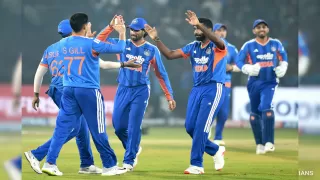
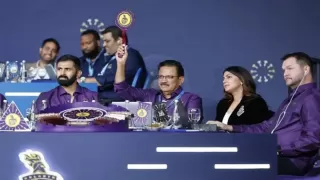
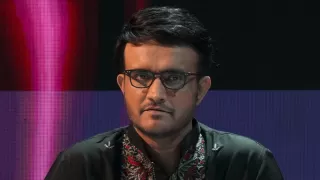

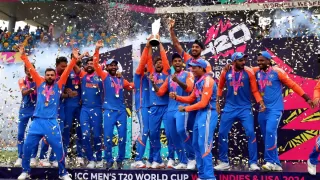
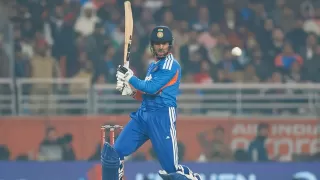
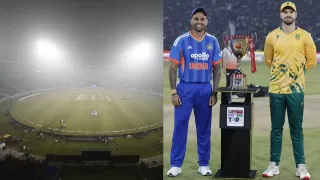
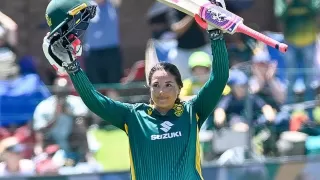

Give Your Feedback